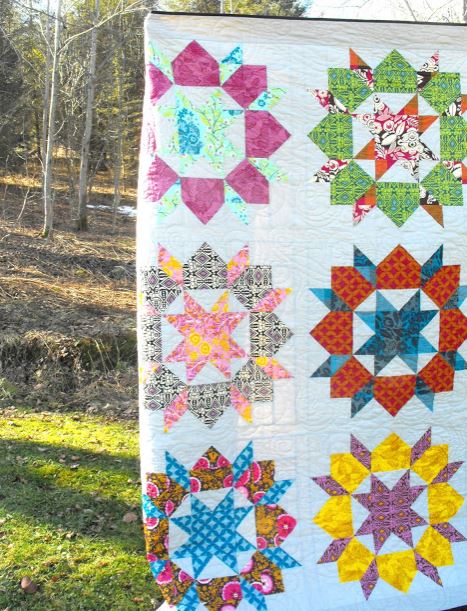Most quilters love to display their handmade quilting projects proudly around the home. Large amounts of time and effort was put into their creation, so show these works of art off! But, some times of the year call for a few less quilts around the house, usually right around springtime. Tucking them away requires some thought and care. Here are some tips on how to store quilts to ensure that your handmade treasures are safe.
Swoon quilt via Fussy Cut
Here are 7 tips to help you properly store your quilts!
As much as we love to use and display our treasured quilts, there comes a time when they need to be tucked away. This is for a variety of reasons, including a change in season. If your home is anything like my own, every quilt is out for the duration of winter. All of our couches and beds are covered in layers of quilts! Once the winter months come to an end and the warm weather rolls around, it is time to put a few away.
1. Only store clean quilts.
Do not store a quilt that isn’t clean. Take a little bit of time to air out the quilt by spreading it across a bed or grass. Use a vacuum attachment to remove any dust or dirt that may be trapped.
Sometimes quilts need a thorough washing before they can be stored away, so take the time to clean your quilt properly.
2. Dry your quilts completely.
Make sure that the quilt is completely dry. Any type of dampness, whether from previous use or a recent washing, can cause mold.
3. Choose your storage location carefully.
Direct sunlight, strong smells, excessive heat and humidity can all damage your quilts. Dark spots like closets, cabinets and under the bed provide the necessary protection.
Also, be sure to keep them away from the kitchen and out of the basement or attic.
4. Roll your quilts if possible.
Permanent creases can be formed on quilts that have been folded for too long. If you decide to fold your quilts, be sure to refold them periodically to prevent creasing.
Did you know that quilts folded on the bias are less likely to crease? Check out this great photo tutorial on how to fold a quilt on the bias!
5. Be aware of the materials that your quilts are touching.
Certain woods have high acidity, which is dangerous for fabric. If you are unsure about the material your quilts are resting on, purchase acid free tissue paper. Use it to line shelves, cabinets and chests or wrap it around the quilt.
Another option? Wrap your quilts in cotton sheets or store them inside a pillowcase. The pillowcase protectors with a zipper closure work really well.
6. Check for bugs!
Are insects a problem in your home? Cedar blocks or balls can help out with that. Special herbs can also serve as a natural insect repellant. Do a bit of research to help you decide what item will work best for you and your quilts.
7. Steer clear of plastic bags and storage containers.
Moisture collects easier in plastic containers, which facilitates a musty smell and/or the growth of mold. Not all quilters agree on this point, but it’s better to be safe than sorry!
You might also enjoy our further tips on storing quilts, as well as our post, “7 Ways to Creatively Display Your Quilts“


Share tips, start a discussion or ask one of our experts or other students a question.
No Responses to “Spring Cleaning: How to Store Quilts”